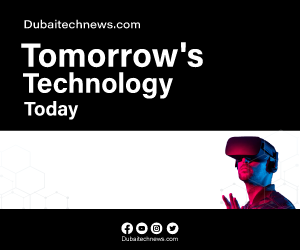Innovation Clinical Development: The Technological Black Hole Of Pharma Donna Conroy Forbes Councils Member Forbes Technology Council COUNCIL POST Expertise from Forbes Councils members, operated under license. Opinions expressed are those of the author. | Membership (fee-based) Jul 14, 2022, 10:15am EDT | Share to Facebook Share to Twitter Share to Linkedin Donna Conroy, MS is Founder/CEO of SciMar ONE, Inc.
a technology company building AI-based SaaS solutions for the pharmaceutical industry. getty On average, it takes more than a decade and up to $2. 8B for a pharmaceutical company to move a drug through the two-step research and development (R&D) process of drug discovery and clinical development before commercialization can begin.
Investing time and resources is clearly a long-term strategy with high risk. Because of this, pharma has an additional reason to increase efficiency, as reduced time to market provides patients faster access to life-altering therapies. One industry-agnostic, well-accepted strategy to do so is to incorporate technology that increases efficiencies for higher profitability.
Balancing profitability with “doing good” has inspired pharma to streamline R&D and commercialization efforts. As such, pharma companies have begun to incorporate innovation teams within their organizations, tasking them with identifying external technologies to increase efficiency. Healthtech companies have responded, and an influx of digital advancements has emerged in drug discovery and commercialization, the bookends of the pharma R&D process.
Both sectors have adopted industry-changing innovations led by artificial intelligence (AI) and machine learning (ML) technologies. Yet a bottleneck of inefficiency remains in the middle step of the pharma process. Clinical development is a complex process with hundreds of interdependent tasks spread among cross-functional teams.
It is arduous and intense work plagued with inefficient, antiquated manual practices. MORE FROM FORBES VETTED Hop On These Back-To-School Prime Day Deals Before They Expire By Jason R. Rich Forbes Staff The Bestselling Nanit Pro Smart Baby Monitor Is $90 Off For Prime Day By Lex Goodman Contributor The mission of clinical development is to shorten the window between an investigational new drug application and regulatory approval, so why is it the technological black hole of pharma? Clinical Development Innovation lags in clinical development due to many complicating factors.
During the seven-to-eight-year timeline , risk to the patient is high and budgets are low. Further, despite a common misconception that clinical trials are the sole activity of clinical development, it involves many business units. Upwards of twelve cross-functional teams including clinical, medical, early commercial, regulatory, managed care and others work simultaneously to complete hundreds of interdependent tasks to prepare the product and market for commercialization.
With disparate teams often working in siloed environments, collaboration is a challenge. Through the years, tasks are unknowingly duplicated by teams, slowing progress and costing companies valuable resources. In addition, the majority of these cross-functional tasks required to move a drug toward commercialization rely on evidence-based clinical data.
Currently, few technology solutions comprehensively address the complex web of clinical development. While some clinical development technologies exist, they are limited in scope and typically provide efficiencies for singular functions. Significant efficiencies will only be seen with holistic innovations.
The question is, how can a system address the needs of cross-functional teams that rely on antiquated manual methods, multiple tools and vendor outsourcing? How can technology weave the intricate web of drug development? It starts by looking at the two book ends of the R&D process: drug discovery and commercialization. Drug Discovery The drug discovery stage requires tedious and redundant evaluation of millions of combinations of multimodal data points followed by preclinical evaluations of drug candidates. As the stage involves big data sets, redundant tasks and lacks patient involvement, the risk-benefit ratio is low, providing a natural fit for ML- and AI-based technologies.
As such, innovation prevails in drug discovery. In simplistic terms, technologies are replacing slow manual methods for searching large datasets to identify potential molecules, new drug targets or repurpose existing drugs. Innovation is thriving in drug discovery with no end in sight.
Pharma companies are executing multi-year contracts with AI-based discovery companies for tens of millions of dollars, and these smart investments are responding to a large global market estimated to be valued at $53. 3 billion in 2021 and projected to reach $80. 2 billion by 2026.
Commercialization Commercialization has seen technological advancements in manufacturing, sales and marketing and supply chain. The current wave of digital innovation focuses on consumerization of healthcare by directly targeting patients throughout their healthcare journey. In Q1 of 2022, venture capitalists invested $357.
6 million (download required) into 23 health and wellness technology transactions. Innovations navigate patients to awareness, diagnosis, treatment or management of side effects and comorbidities, incorporating a call to action in convenient, easy-to-use technologies. These patient-centric technologies demand and receive high investment as they address a market shifting toward value-based and outcome-based healthcare models while addressing challenges associated with profitability limitations from patent protection timelines.
Escaping The Black Hole While the bookends of pharma, drug discovery and commercialization benefit from growing technological advancements, clinical development remains the technological black hole. There is a clear need for investment and expertise in holistic solutions that leverage data, enhance collaboration and uncomplicate a nuanced process for individuals working across functions on clinical development teams. One can explore the many reasons for the lack of innovation in the clinical development stage.
Is it due to high patient risk or an aversion to change management? The objection list is long, but the reasons are irrelevant. Accelerating access to life-changing therapies equitably should be the north star guiding technological innovation away from clinical development’s black hole. Forbes Technology Council is an invitation-only community for world-class CIOs, CTOs and technology executives.
Do I qualify? Follow me on Twitter or LinkedIn . Check out my website . Donna Conroy Editorial Standards Print Reprints & Permissions.
From: forbes
URL: https://www.forbes.com/sites/forbestechcouncil/2022/07/14/clinical-development-the-technological-black-hole-of-pharma/



